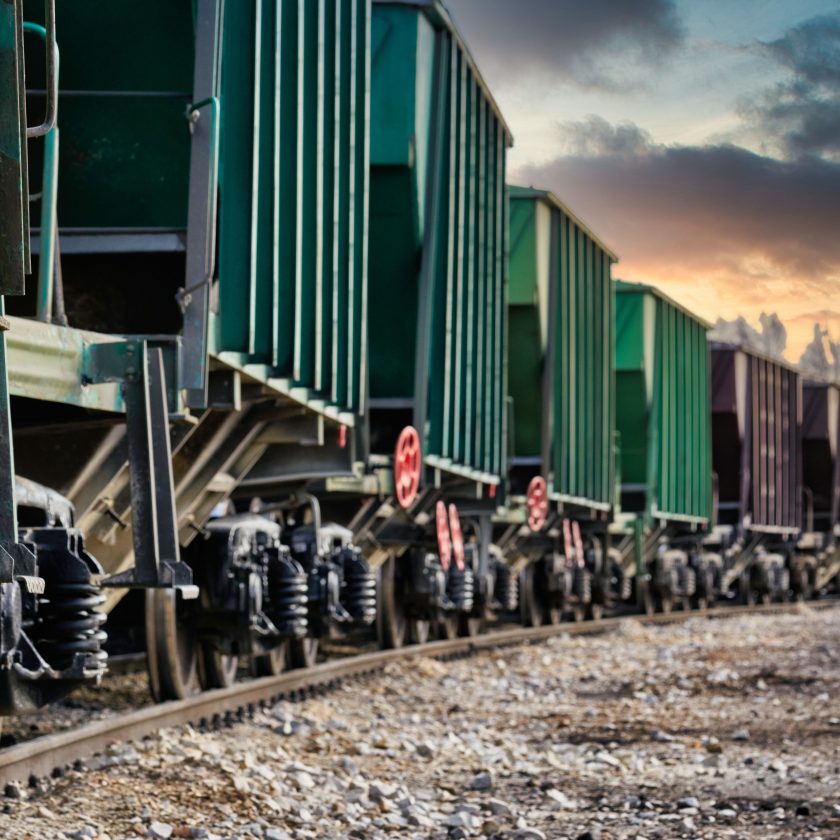1st container ship docks at Baltimore’s Seagirt Terminal since bridge collapse
NewsContainer ships have begun calling at Baltimore’s terminals, one month since the suspension of vessel traffic at the port following the Key bridge collapse.
75 containers arrived at Seagirt Terminal by rail from the Port of New York and New Jersey as Port of Baltimore works to mitigate service disruptions caused by Key bridge collapse.

The Port of Baltimore is working with freight rail carriers to mitigate supply chain disruptions caused by the suspension of vessel traffic by the recent collapse of the Francis Scott Key bridge.
Ports America, a port operator and supply chain logistics provider in North America, said that intermodal partnerships with CSX and Norfolk Southern at the Port of Baltimore are being leveraged to divert export cargo and return Baltimore-bound imports for release.
“Our on-dock railyard at the Seagirt Intermodal Container Transfer Facility (ICTF) also offers direct services and seamless connections for our customers in the face of the present crisis and is facilitating the flow of export and import cargos through the Baltimore market. Additional rail access is available via local drayage services,” Ports America said.
“This week, rail service transporting freight between Baltimore to New York and New Jersey will begin to mitigate temporary service disruption. Additional services are being evaluated and will be communicated with our stakeholders as information becomes available.”
Norfolk Southern announced that it was launching a dedicated service to facilitate the flow of freight between the Elizabeth Marine Terminal at the Port of New York and New Jersey and the Seagirt Marine Terminal in Baltimore on April 5.
The company added that it was in discussions with Ports America to extend this service directly on-dock at their Seagirt Intermodal Container Transfer Facility, benefitting shippers close to Baltimore.
Similarly, CSX has also launched a dedicated service solution between Baltimore and New York to mitigate freight shipment disruptions, targeting shipping containers, and truck-sized boxes.
The Port of Baltimore said in the latest update that 75 containers arrived at Seagirt Terminal by rail from the Port of New York and New Jersey and that the International Longshoremen’s Association worked on the transfer.
Today Port Director Jonathan Daniels & @LtGovMiller updated 180+ business leaders on the Key Bridge incident.
He said more equipment to clear the scene is on the way & 75 containers arrived at Seagirt Terminal by rail today from @PortNYNJ. @ILAUnion labor worked the transfer. pic.twitter.com/4eitEB0C8p
— Port of Baltimore (@portofbalt) April 4, 2024
“The 75 containers we moved today represent less than 5% of the average number of containers that the port processed daily before the collapse. We still have a long road ahead to getting vessel traffic back to full capacity – but we will,” Maryland Governor Wes Moore said.
Norfolk Southern added that it was collaborating with the Port of Virginia, leveraging key service points like the Virginia Inland Port in Front Royal, to serve regions further afield, such as Western Maryland, Southern Pennsylvania, and Northern Virginia.
The company has implemented an embargo for automotive traffic destined for Dundalk Marine Terminal, and is diverting cargo to the East Coast. The company said it was also working with automotive manufacturers to develop rail solutions through alternate ports of entry in Georgia, Florida, Delaware, New York, and New Jersey.
Break bulk cargo that traditionally moves through the Port of Baltimore, including lumber, pulp, and roll-on/roll-off traffic, is being diverted with alternative transportation solutions amidst port shifts and supplier changes, Norfolk said, adding that it was working with shippers to utilize alternate river and East Coast port transloads, including its Lambert’s Point terminal in Norfolk, Virginia, for coal transport.
Furthermore, CSX railroad is diverting international freight to New York and considering expanding coal shipments to its served terminals in Virginia.
By subscribing you will have: